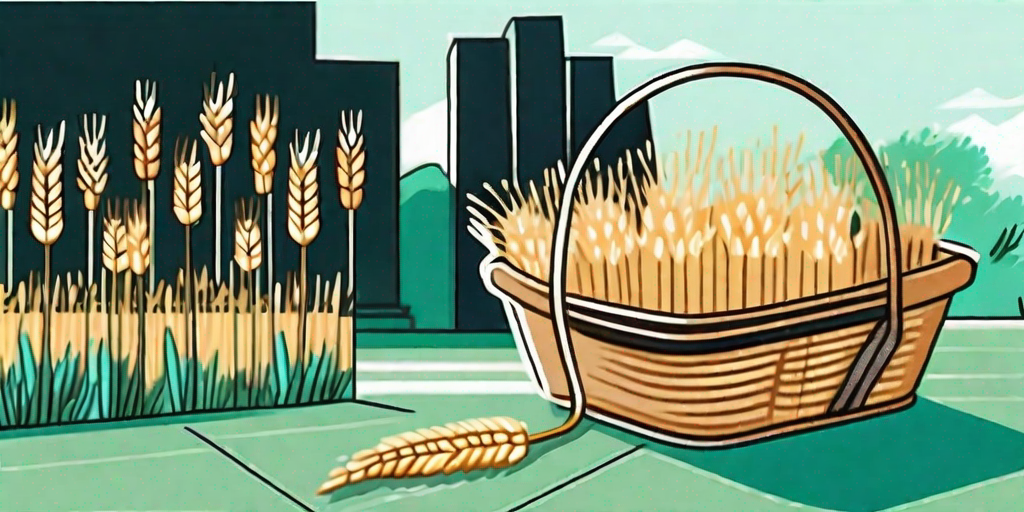
Have you ever looked at a loaf of bread and thought, "I could grow that?" No? Well, you're in the right place, because we're about to dive into the exciting world of backyard wheat farming. Yes, you read that right. Wheat. In your backyard. Let's get started, shall we?
Why Grow Wheat in Your Backyard?
Before we start sowing seeds, let's address the wheat-filled elephant in the room. Why would anyone want to grow wheat in their backyard? Well, apart from the obvious bragging rights and the potential for a new Instagram hobby, there are a few practical reasons.
Firstly, growing your own wheat can be a fun and educational project for the whole family. It's a great way to teach kids about where their food comes from, and the process of growing, harvesting, and milling wheat can be incredibly satisfying.
Secondly, if you're into baking, there's nothing quite like the taste of bread made from freshly milled, homegrown wheat. It's a flavor experience that's hard to describe, but once you've tried it, you'll never want to go back to store-bought flour.
Getting Started: Choosing Your Wheat
Now that we've established why you should be growing wheat in your backyard, let's talk about how to get started. The first step is choosing the right type of wheat for your needs and climate.
There are two main types of wheat: winter wheat and spring wheat. Winter wheat is planted in the fall and harvested in the summer, while spring wheat is planted in the spring and harvested in the fall. Your choice will depend on your local climate and the time of year you want to harvest.
Within these two categories, there are hundreds of different varieties of wheat, each with its own unique flavor, color, and baking properties. Some popular choices for home growers include hard red winter wheat, soft white spring wheat, and hard white spring wheat.
Planting Your Wheat
Once you've chosen your wheat, it's time to get planting. But before you start throwing seeds around willy-nilly, there are a few things you need to know.
Firstly, wheat needs a lot of sunlight, so choose a spot in your backyard that gets at least six hours of direct sunlight a day. Secondly, wheat prefers well-drained soil, so avoid areas that are prone to waterlogging.
When it comes to actually sowing the seeds, the process is surprisingly simple. Just scatter the seeds evenly over the soil, then rake them in to a depth of about an inch. Water well, and wait for the magic to happen.
Harvesting Your Wheat
The moment you've been waiting for: harvest time. But how do you know when your wheat is ready to harvest? And how do you actually go about harvesting it?
Wheat is ready to harvest when the stalks have turned golden brown and the grains are hard. To test, simply bite into a grain. If it's hard and crunchy, it's ready to harvest.
To harvest your wheat, you'll need a scythe or a sickle. Simply cut the stalks near the base and bundle them together. Then, leave them to dry in a warm, dry place for a couple of weeks.
Processing Your Wheat
Once your wheat is dry, it's time to thresh and winnow it. Threshing is the process of removing the grains from the stalks, while winnowing is the process of separating the grains from the chaff.
Threshing can be done by simply rubbing the wheat heads between your hands or by placing them in a bag and beating them against a hard surface. Winnowing, on the other hand, involves throwing the threshed wheat into the air and letting the wind blow away the lighter chaff, leaving the heavier grains behind.
Finally, you'll need to mill your wheat to turn it into flour. This can be done with a home grain mill or a high-powered blender. And voila! You have your very own homegrown, homemade flour.
Frequently Asked Questions
How much wheat can I grow in my backyard?
The amount of wheat you can grow in your backyard depends on the size of your backyard and the variety of wheat you choose. However, as a general rule of thumb, you can expect to get about 10 pounds of wheat from a 100 square foot plot.
What do I do if my wheat gets a disease?
Wheat can be susceptible to a number of diseases, including rusts, smuts, and blights. If your wheat gets a disease, the best course of action is usually to remove and destroy the affected plants to prevent the disease from spreading.
Can I grow wheat in a container?
Yes, you can grow wheat in a container! Just make sure the container is deep enough to accommodate the wheat's roots and has adequate drainage.
Conclusion
So there you have it: a comprehensive guide to growing wheat in your backyard. It might seem like a lot of work, but trust us, the satisfaction of baking a loaf of bread with your own homegrown flour is worth every bit of effort. So why not give it a try? Who knows, you might just find your new favorite hobby.
And remember, if anyone asks why you're growing wheat in your backyard, just tell them: because you can.











